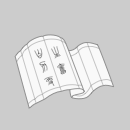
环球汉语 汉字练习本1
正版全新
¥ 28.4 5.8折 ¥ 49 全新
仅1件
作者(美)孟德儒,(美)李荣珍 编著
出版社华语教学出版社
ISBN9787513802314
出版时间2012-01
装帧平装
开本16开
纸张胶版纸
定价49元
货号1814260
上书时间2024-09-13
- 在售商品 暂无
- 平均发货时间 23小时
- 好评率 暂无
- 最新上架
商品详情
- 品相描述:全新
- 商品描述
-
【书 名】 环球汉语 汉字练习本1
【书 号】 9787513802314
【出 版 社】 华语教学出版社
【作 者】 (美)孟德儒,(美)李荣珍 编著
【出版日期】 2012-01-01
【开 本】 16开
【定 价】 49.00元
【编辑推荐】
Welcome to Encounters, a groundbreaking Chinese language
program that features a dramatic series filmed entirely in China.
The program's highly communicative approach immerses learners in
the Chinese language and culture through video episodes that
directly correspond to units in the textbook. By combining a
compelling story line with a wealth of educational materials,
Encounters weaves a tapestry of Chinese language and culture rich
in teaching and learning opportunities.
Encounters follows a carefully structured and cumulative
approach. Students progress from listening and speaking to the more
difficult skills of reading and writing Chinese characters,
building grammar, vocabulary, and pronunciation skills along the
way.
The Encounters program includes:
A dramatic series, filmed on location in Beijing, Qinghai Lake,
Shanghai, Yangshuo, Suzhou, and Xi'an, making today's China come
alive.
Video exercises and cultural segments that motivate students to
learn.
Full-color Student Books integrated with the multimedia
program.
Annotated Instructor's Editions featuring suggested class
activities, answer keys, and teaching tips.
Character Writing Workbooks to help master the art of Chinese
writing.
200+ minutes of audio material and podcasts for listening and
speakinq practice.
【内容简介】
Welcome to writing practice. This book is a companion to
Encounters Student Book One, and it will help you learn the Chinese
characters required for writing. Note that many other characters
are presented in the Readings section of Encounters, but these are
not practiced here. We practice here only those required for
writing recall. Keep in mind that writing and learning go hand in
hand, so practice in one leads to increased proficiency in the
other. What's more, writing is also just plain fun. So give some
time to developing a decent handwriting. You'II be proud of
yourself and of your Chinese. As you proceed, keep in mind the
following tips.
Tactics and StrateEries for Learning Characters
Characters may seem, at first glance, an unorganized jumble of
pen strokes, but, in fact, each character has one or more
components and each component contributes to the character.
Although the total Chinese characters number in the tens of
thousands, all characters are constructed from about 600 components
in varying combinations. When you learn a character, it will be
helpful if you pay close attention to components rather than look
at the character as an isolated, haphazard collection of strokes.
This manual will help you in that effort.
When you write a character, you do write it with individual
strokes. Each stroke must be written in a prescribed sequence, such
as left to right, top to bottom, and so on, and learning the proper
order will be important to the rest of your study of Chinese. For
example, if you see a character that you don't know, you will need
to consult a Chinese dictionary. To do so successfully, you need to
be able to count the strokes properly. Improper stroke order often
leads to an incorrect stroke count, and missing a stroke here and
there will lead you astray.
Writing practice will help you understand the'structure of
Chinese characters, which helps retention. Writing will enable you
to see the inner logic of characters, how they are built from two,
three, or more components-which, again, will assist memory. Most
Chinese characters are made up of one or more of these components,
and these components are not haphazardly placed together but have
definite, helpful-to-the-learner relationships. Learning the
relationship of the parts leads to learning and better remembering
the whole. Information contained on these sheets will help in that
analysis.
【目录】
Read This First!
Tactics and Strategies for Learning Characters
Questions Often Asked About Writing Chinese Characters
The Eight Basic Strokes
Introductory Unit
Chinese Characters: Pictographs
Stroke Order: Basic Guidelines
A Guide to the Information on Each Character
Unit Characters:
一、二、三、四、五、六、七、八、九、十、火、口、木、人、山、水
Unit 1
Some Basic Terms
Unit Characters:
好、吗/嗎、请/請、你、是、我、再、见/見、对/對、不、起、姓、谢/謝、他、们/們、叫、什/甚、么/麼、名、字
Unit 2
More on Chinese Character Building
Unit Characters:
您、大、小、多、位、这/這、那、哪、儿/兒、几/幾、号/號、了、年、月、日、岁/歲、生、的、地、址
Unit 3
Practice with Radicals
Unit Characters:
上、下、今、天、早、晚、午、现/現、在、半、分、点/點、星、期、时/時、候、等、有、事
Unit 4
Five Useful Phonetics
Unit Characters:
中、国/國、家、关、英、文、喜、欢/歡、说/說、话/話、会/會、都、得、没、去、过/過、出
Unit 5
Review of Selected Characters and Their Radicals
Unit Characters:
父、爸、母、亲/親、妈/媽、姐、妹、兄、哥、弟、男、女、两/兩、个/個、和、才、里/裡
Unit 6
It All Started with **
Unit Characters:
也、她、还/還、想、要、将/將、来/來、赚/賺、钱/錢、因、为/為、帮/幫、知、道、当/當、做、别、或、者、念、级/級、意、思
Unit 7
Can You Construct a Chinese Character?
Unit Characters:
坐、走、回、吃、东/東、西、吧、怎、样/樣、高、兴/興、着/著、急、热/熱、冷、累、忙、饿/餓、饭/飯、饱/飽
Unit 8
Further Practice with Radicals
Unit Characters:
周/週、末、睡、觉/覺、看、电/電、视/視、影、玩、网/網、门/門、以、前、后/後、洗、手、每、班
Unit 9
Yes, You Can Type Chinese!
Unit Characters:
黑、红/紅、白、金、银/銀、元、买/買、卖/賣、贵/貴、便、宜、比、跟、少、太、能、够/夠、给/給
Unit 10
Matching Exercise
Unit Characters:
用、心、开/開、车/車、到、百、货/货、商、场/場、店、路、左、右、南、北、面、边/邊、近、远/速、离/離
Index Ⅰ: Characters Arranged by Pinyin
Index Ⅱ: Characters Arranged by Number of Strokes
Index Ⅲ: Comparison of Simplified and Traditional Characters
Some Useful References
Character Writing Sheets (for student reproduction)
相关推荐
-

环球汉语汉字练习本1
九品廊坊
¥ 10.66
-

环球汉语汉字练习本1
九品廊坊
¥ 7.66
-

环球汉语汉字练习本1
九品廊坊
¥ 10.66
-

环球汉语:汉语和中国文化(汉字练习本1)
八五品北京
¥ 6.00
-

环球汉语:汉语和中国文化(汉字练习本1)
八品濮阳市
¥ 8.00
-

环球汉语:汉语和中国文化(汉字练习本1)
九品衡水
¥ 8.00
-

环球汉语:汉语和中国文化(汉字练习本1)
九五品北京
¥ 18.00
-

环球汉语:汉语和中国文化(汉字练习本1)
九品文山
¥ 5.00
-

环球汉语:汉语和中国文化(汉字练习本1)
九品北京
¥ 8.00
-

环球汉语.汉字练习本2:汉英对照
八五品蚌埠
¥ 7.00
— 没有更多了 —














以下为对购买帮助不大的评价